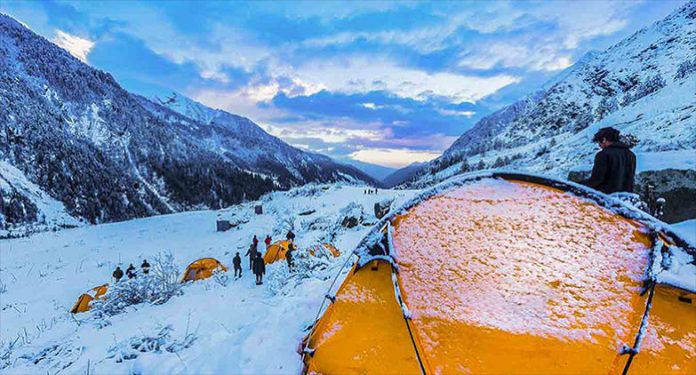Har ki Dun Route
On your trip to a peaceful winter wonderland, you’ll have the chance to visit some historic settlements, where you can get to know the locals and learn about the unique blend of cultures and customs that allows them to survive in such harsh environments. Planned activities on the way to Har ki Dun include:
Leaving Dehradun, on Day One, you will arrive in Sankri (220 km drive)
Leaving Sankri for Pauni Garaat via Taluka on Day 2 (12 km drive to Taluka, followed by 6 hours walk to Puani Garaat)
Moving From Puani Garaat to Kalkattiyadhar on Day 3 (8 km walk that takes 6-7 hours)
Thursday is spent travelling to and from Har ki Dun and Kalkattiyadhar (10 km walk that takes 9 hours)
5th day: travel from Kalkattiyadhar to Pauni Garaat via Osla (8 km walk that takes 5 hours)
Going from Pauni Garaat to Sankri via Taluka on Day 6 (10 km trek, followed by an hour drive to homestay or guest house)
The Seventh Day: From Sankri to Dehradun (220 km drive)
Har ki Dun : Sightseeing Opportunities
On your journey, you will visit the following locations:
Govind National Park
The area contains the basin for the principal tributary of the River Yamuna, which flows through the valleys of Rupin and Supin. It spans the subtropical, temperate, and alpine climate zones, making for a richly varied floral landscape. The region is home to more than 20 different kinds of mammals and 100 different kinds of birds, and is characterised by an abundance of Himalayan cedar, rhododendron, Himalayan yew, beech, Himalayan spruce, and spikenard.
Town of Taluka
Nearly 10 kilometres separate Taluka village and Sankri. The kind people in this picturesque hamlet offer lodging and food to travellers for very reasonable prices in their cluster of wooden homes. Taluka is a great spot to stop and learn about the local culture of the Himalayan villages you pass through on your way, with its roaring river and never-ending chats about the area.
Temple of Someshwar Mahadev
The Someshwar Mahadev temple in Sankri is a popular destination for the city’s annual celebrations. The temple’s Pahadi-style construction features exquisite Deodar woodcarvings. You can spend a few hours at the temple, which dates back to the time of the Pandavas, taking in the scenery of the Swargarohini range.
The Valley of Har ki Dun
At an elevation of 3,566 metres, it is a secret valley that few people ever visit. From December to March, when the valley of Har ki Dun is covered in a thick layer of snow, visitors can enjoy breathtaking views of Swargarohini Peak, Kala Nag Peak, Bandarpoonch, and more. It’s in the Garhwal region of the Himalayas, which has several less-traveled valleys.
Activities for the Har ki Dun Hike
These are some of the things you may do when visiting Har khi Dun:
Foremost, going on a camping trip
On your way to Har ki Dun, you’ll be able to pitch your tent next to a rushing river and a forest of towering trees. Camping during Har ki Dun is an unforgettable adventure—much more so than staying in a homestay or guest house—thanks to the chance to sleep under the starry sky, wake up to the sounds of nature, and perhaps even see some uncommon birds as they argue in the trees.
The Second: Hiking
The Har ki Dun trek is a challenging hike across rugged terrain that rewards hikers with stunning views of snow-capped peaks and secret waterfalls and valleys. Hiking to adjacent settlements is another option if you’d want to rest and refuel before continuing on your journey. You may learn the most about the local traditions, customs, and way of life in the areas of Osla, Sankri, and Taluka.
Thirdly, Photography and Birdwatching
This hike is a dream come true for outdoor enthusiasts. There are many different species of birds to see in this area, such as the Great Pied Hornbill, Green Magpie, Cheer-Pheasant, Koklass-Pheasant, Kalij-Pheasant, Hill-Partridge, Rufous-throated Partridge, Oriental Turtle Dove, Ultramarine Flycatcher, Rufous-bellied Niltava, Verditer Flycatcher, Rufous Sibia, Great Barbet, and many more! You can’t get through this trip without constantly pulling out your phone or DSLR to snap photos.

